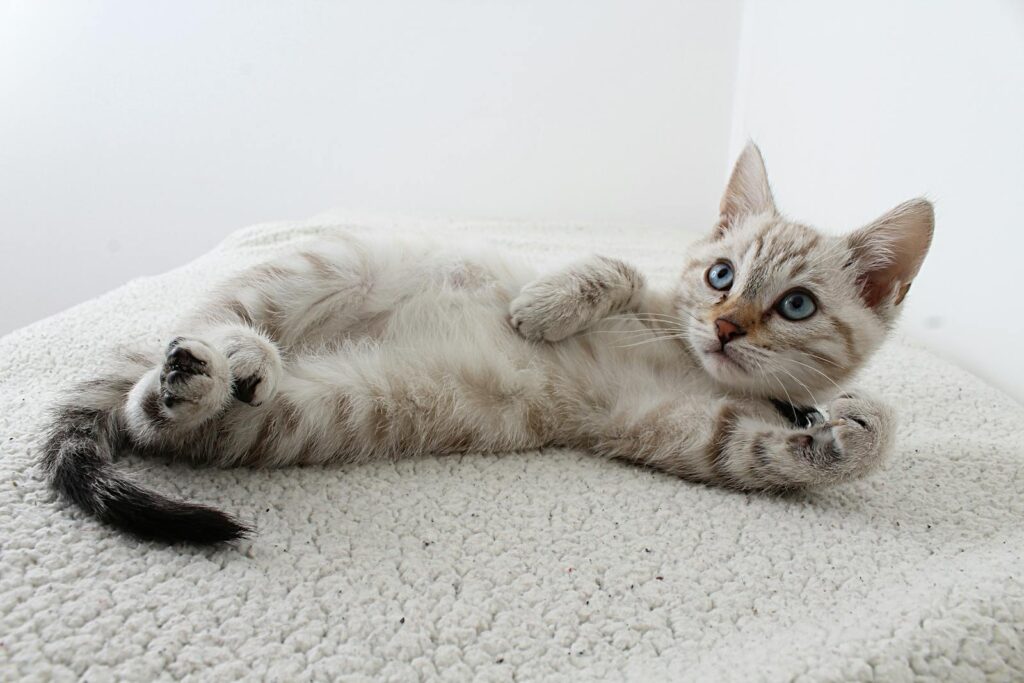Does your furry friend have a breath that could clear a room? If so, you’re not alone. Cat halitosis, or bad breath, is a common issue that can be more than just a nuisance. Left unchecked, it can signal underlying health problems that need your attention.
“Anyone who has ever been up close and personal with a cat knows the importance of fresh breath,” says Dr. Emily Ford, a noted veterinarian. “It’s not just about keeping your pet kissable—it’s about ensuring they’re healthy, too.”
This guide will walk you through the causes, diagnosis, and treatment options for cat halitosis. From simple at-home remedies to knowing when it’s time to visit the vet, we’ve got you covered.
What are the common causes of bad breath in cats?
One of the most common causes of bad breath in cats is dental disease. Plaque and tartar buildup on a cat’s teeth can lead to gingivitis and periodontal disease, which produce foul-smelling bacteria and result in halitosis. Another frequent cause of bad breath in cats is oral infections. These infections can be due to injuries, abscesses, or even oral tumors, all of which can emit a strong, unpleasant odor.
Diet can also play a significant role in a cat’s breath. Cats that consume a diet high in fish or certain types of cat food may develop bad breath due to the lingering smell of these foods. Kidney disease is another potential cause of halitosis in cats. When a cat’s kidneys are not functioning properly, waste products can build up in the bloodstream and cause a distinct, ammonia-like odor in the breath. Respiratory infections or conditions, such as sinusitis or rhinitis, can lead to bad breath in cats. These infections can cause nasal discharge and postnasal drip, which contribute to an unpleasant smell.
Diabetes mellitus can also result in bad breath in cats. Cats with uncontrolled diabetes often have a sweet or fruity odor to their breath, which is due to the presence of ketones, a byproduct of fat metabolism.
How can cat halitosis be diagnosed?
Cat halitosis, or bad breath, can be diagnosed through a combination of veterinary examinations and diagnostic tests. The first step typically involves a thorough physical examination by a veterinarian. During this exam, the vet will inspect the cat’s mouth, teeth, and gums for obvious signs of dental disease, such as tartar buildup, gingivitis, or loose teeth. In addition to the physical examination, the veterinarian may also ask about the cat’s medical history and any symptoms you have observed, such as changes in eating habits, drooling, or pawing at the mouth. This information can help identify potential underlying causes of bad breath.
Dental X-rays are often a crucial part of diagnosing cat halitosis. These X-rays can reveal issues that are not visible during a regular examination, such as tooth root abscesses, bone loss, or other hidden dental problems. This imaging helps the vet to assess the full extent of any dental disease. Blood tests and urinalysis may be recommended to rule out systemic conditions contributing to bad breath, such as kidney disease, diabetes, or liver problems. These tests provide a comprehensive overview of the cat’s overall health and can identify metabolic issues that might be affecting the breath.
In some cases, a more detailed oral examination under anesthesia may be necessary. This allows the veterinarian to thoroughly clean the teeth and gums, remove any tartar, and closely inspect the oral cavity for lesions, tumors, or other abnormalities that could be causing the halitosis. If dental disease is ruled out, the veterinarian may explore other potential causes of halitosis, such as gastrointestinal issues, respiratory infections, or dietary factors. This might involve additional diagnostic tests like fecal exams, endoscopy, or imaging studies of the chest and abdomen.
What treatments are available for cat bad breath?
One of the most common treatments for cat bad breath is professional dental cleaning. This involves a veterinarian thoroughly cleaning your cat’s teeth and gums under anesthesia. The procedure removes plaque and tartar buildup, which are often the primary causes of bad breath. Regular professional cleanings can prevent periodontal disease and other oral health issues that contribute to halitosis. Daily tooth brushing is another effective treatment for cat bad breath. Using a cat-specific toothbrush and toothpaste, you can help reduce plaque and tartar accumulation. It’s important to start slowly and make the experience as positive as possible for your cat. Consistent brushing can significantly improve your cat’s oral hygiene and reduce bad breath.
Specialized dental diets and treats can also help manage cat bad breath. These products are designed to promote oral health by reducing plaque and tartar buildup. Dental diets often have a unique texture that helps clean teeth as the cat chews, while dental treats may contain ingredients that target bacteria and freshen breath. Water additives are another option for treating cat bad breath. These products are added to your cat’s drinking water and contain ingredients that help reduce bacteria in the mouth, freshen your breath, and promote overall oral health. They are an easy and non-invasive way to support your cat’s dental hygiene.
Regular veterinary check-ups are crucial for diagnosing and treating underlying health issues that may cause bad breath. Conditions such as kidney disease, diabetes, or gastrointestinal problems can contribute to halitosis. A veterinarian can perform tests to identify any underlying issues and recommend appropriate treatments or dietary changes. Antibiotics may be prescribed if your cat’s bad breath is caused by a bacterial infection. These medications can help eliminate the infection and improve your cat’s breath. However, antibiotics should only be used under the guidance of a veterinarian, as improper use can lead to resistance and other health issues.
- Feline halitosis can sometimes indicate serious conditions like liver disease or cancer.
- Diet plays a significant role in your cat’s oral health; certain foods can contribute to bad breath.
- Regular brushing of your cat’s teeth can significantly reduce the risk of bad breath and dental disease.
- Both puppies and kittens can experience teething, which might lead to temporary bad breath.
- Poor oral hygiene can result in plaque and tartar build-up, exacerbating bad breath.
- Systemic illnesses like diabetes often manifest symptoms such as a distinct fruity or sweet-smelling breath in cats.
- Abscesses or ulcers in the mouth can also be sources of foul-smelling breath.
- Veterinary dental cleanings are essential for maintaining your cat’s oral and overall health.
- Overuse of antibiotics without veterinary oversight can lead to antibiotic resistance.
Are there preventive measures for cat halitosis?
Preventive measures for cat halitosis are essential to maintain your feline’s oral health and overall well-being. One of the most effective ways to prevent bad breath in cats is through regular dental care. Brushing your cat’s teeth several times a week with cat-specific toothpaste can significantly reduce plaque and tartar buildup, which are common causes of bad breath. A balanced diet also plays a crucial role in preventing cat halitosis. Feeding your cat high-quality, nutritionally complete food can help maintain their oral health. Some cat foods are specifically formulated to reduce plaque and tartar. Additionally, providing dental treats and toys designed to clean teeth can be beneficial.
Regular veterinary check-ups are another key preventive measure. Routine dental exams and cleanings by a veterinarian can catch early signs of dental disease before they become severe. Your vet can also provide personalized advice on maintaining your cat’s oral hygiene. Hydration is important for your cat’s oral health. Ensure your cat has constant access to fresh water, which helps wash away food particles and bacteria that can cause bad breath. Some cats prefer running water, so a pet water fountain might encourage them to drink more.
Lastly, monitoring your cat’s overall health is crucial. Conditions such as diabetes, kidney disease, and gastrointestinal issues can contribute to bad breath. Keeping an eye on your cat’s health and addressing any underlying medical conditions promptly can help prevent halitosis.
How does diet affect a cat’s breath?
Diet plays a significant role in a cat’s oral health and can directly impact their breath. Foods that are high in carbohydrates and sugars can contribute to the buildup of plaque and tartar on a cat’s teeth. This buildup can harbor bacteria, which produce foul-smelling compounds, leading to bad breath. On the other hand, a diet that includes high-quality, protein-rich foods can help maintain better oral hygiene. Proteins are less likely to stick to the teeth compared to carbohydrates, reducing the chances of plaque formation. Additionally, some cat foods are specifically formulated to promote dental health, containing ingredients that help clean the teeth as the cat chews.
Raw diets or diets that include raw meaty bones can also be beneficial for a cat’s breath. Chewing on bones can help scrape off plaque and tartar, naturally cleaning the teeth and gums. However, it’s important to consult with a veterinarian before introducing raw foods to ensure they are safe and nutritionally balanced. Wet food versus dry food can also make a difference. While dry kibble can help mechanically clean the teeth to some extent, it can also leave behind particles that contribute to plaque. Wet food, although less abrasive, often contains fewer carbohydrates, which can be beneficial for reducing plaque buildup. A balanced approach, incorporating both wet and dry food, might be ideal for maintaining oral health.
Are there any home remedies for cat bad breath?
Indeed, there are some effective home remedies you can try to combat your furry friend’s bad breath. Maintaining good oral hygiene is the cornerstone. Start by introducing a regular tooth-brushing routine using a cat-specific toothbrush and toothpaste. Never use human toothpaste, as it can be toxic to cats.
Incorporating dental treats and toys designed to reduce plaque and tartar buildup can also be beneficial. These products can provide both physical cleaning action and often include ingredients that help maintain oral health.
Consider adding water additives to your cat’s drinking water. These act like a mouthwash, helping to reduce bacteria and freshen breath over time. However, it’s important to use products specifically formulated for cats to ensure their safety.
Lastly, a balanced diet plays a crucial role. Ensure your cat’s diet includes crunchy kibble to help naturally clean their teeth and gums. Occasionally, raw meaty bones (appropriately sized and supervised) can act as a natural toothbrush, helping scrape off plaque.
Conclusion
In summary, addressing your cat’s bad breath is not just about freshening their breath; it’s about ensuring their overall health. From regular vet check-ups to appropriate treatments and preventive measures, there are several ways to manage and mitigate halitosis. Always keep a close eye on any changes in your cat’s habits or health. By staying proactive, you can help your feline friend enjoy a healthier life with fresher breath. Remember, when in doubt, it’s always best to see the vet!



